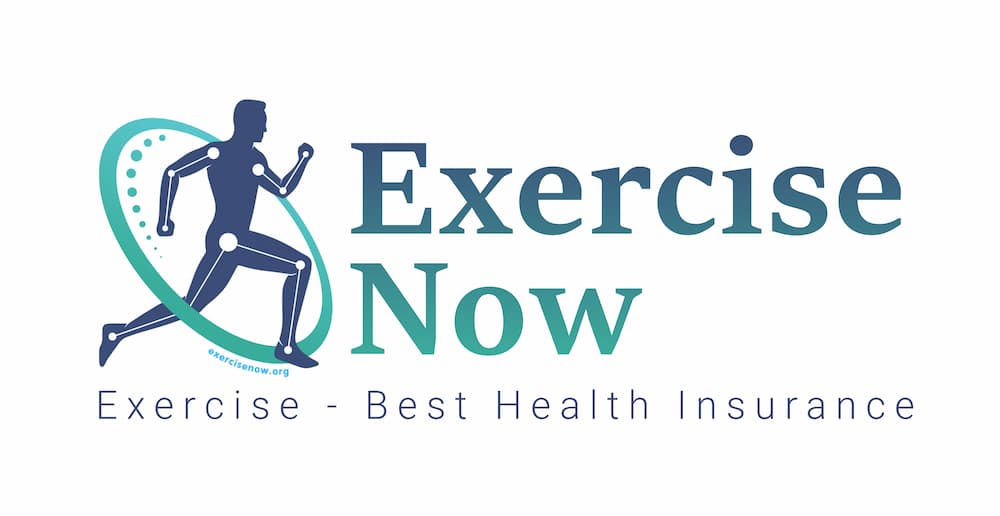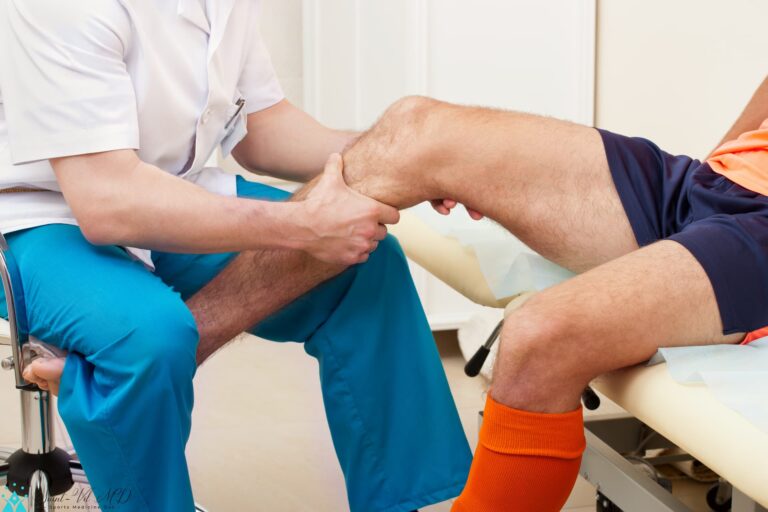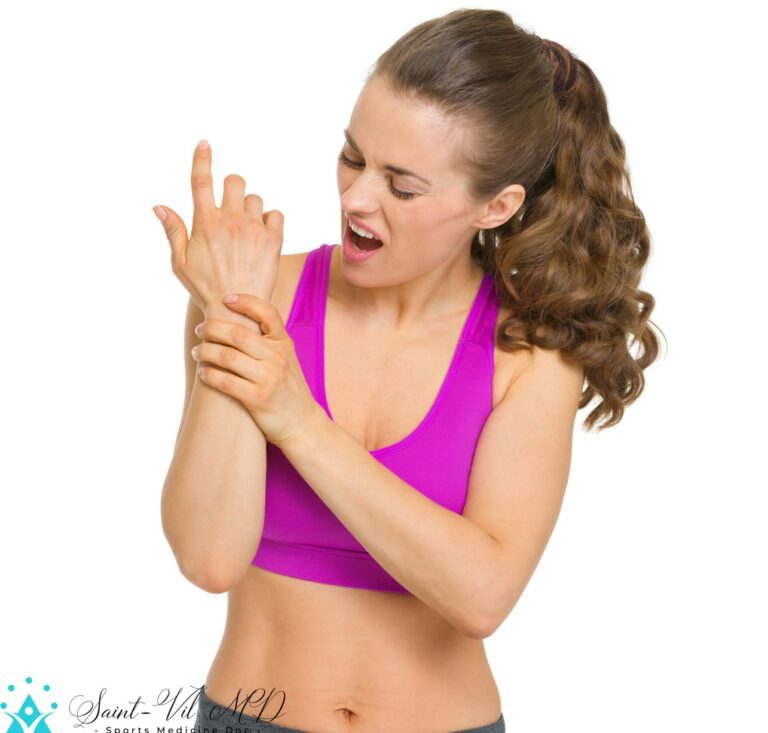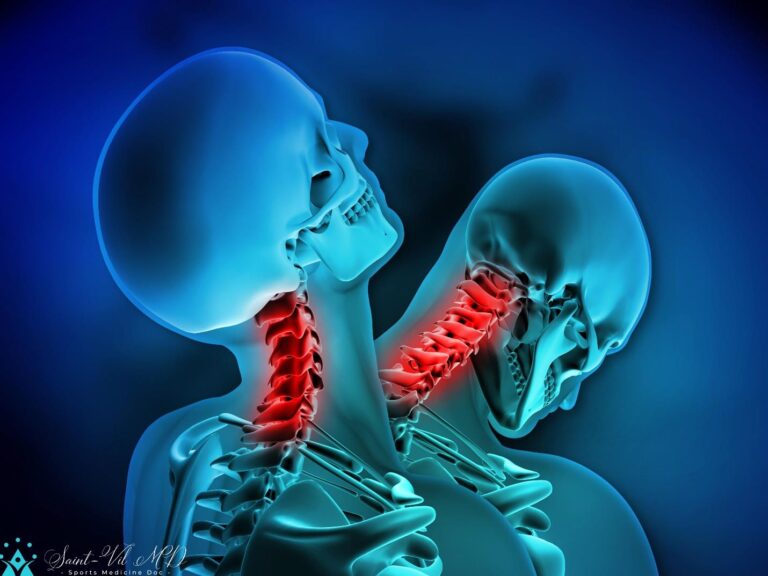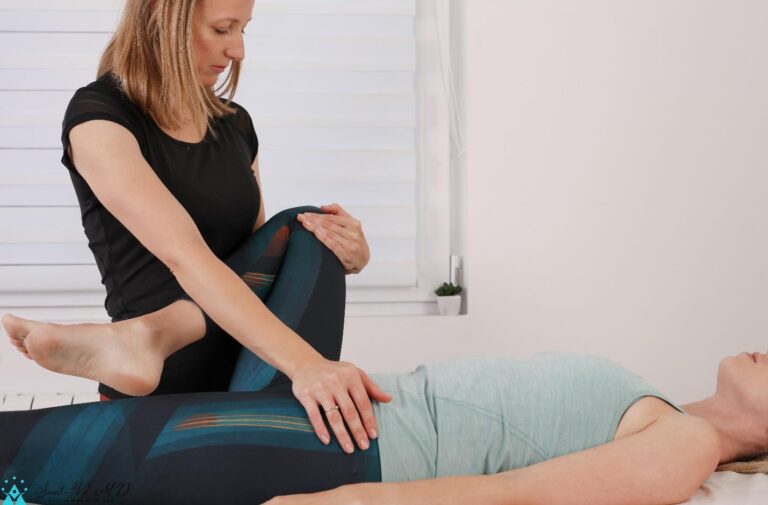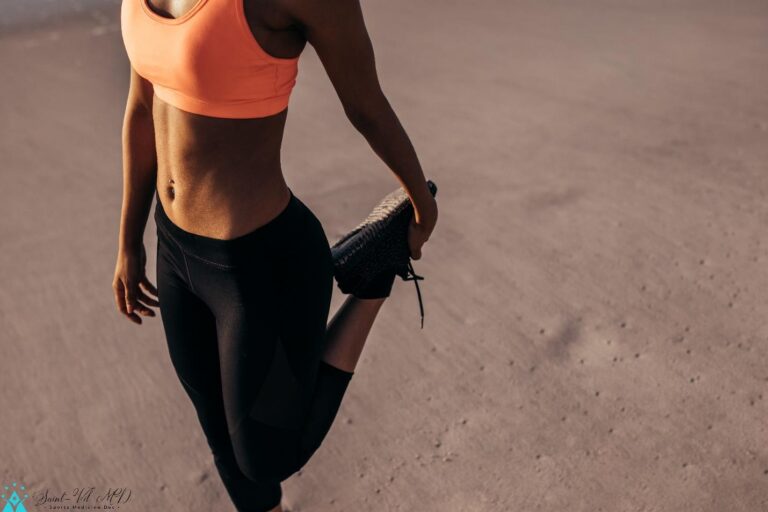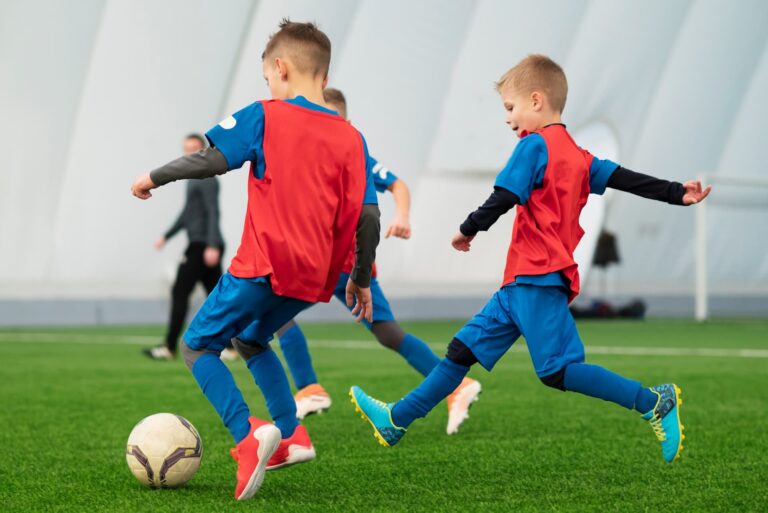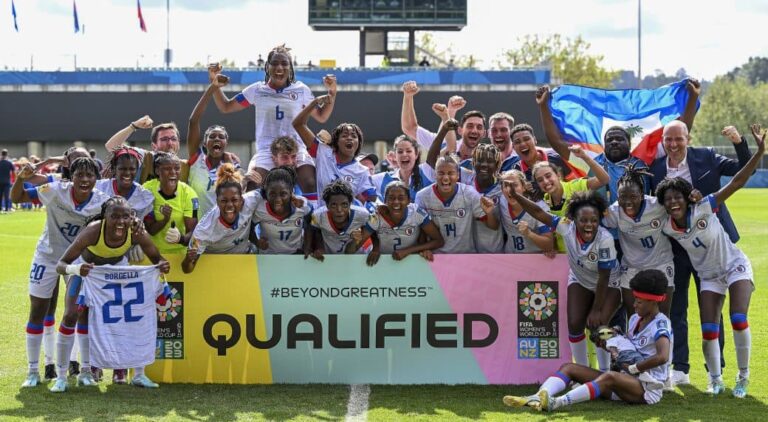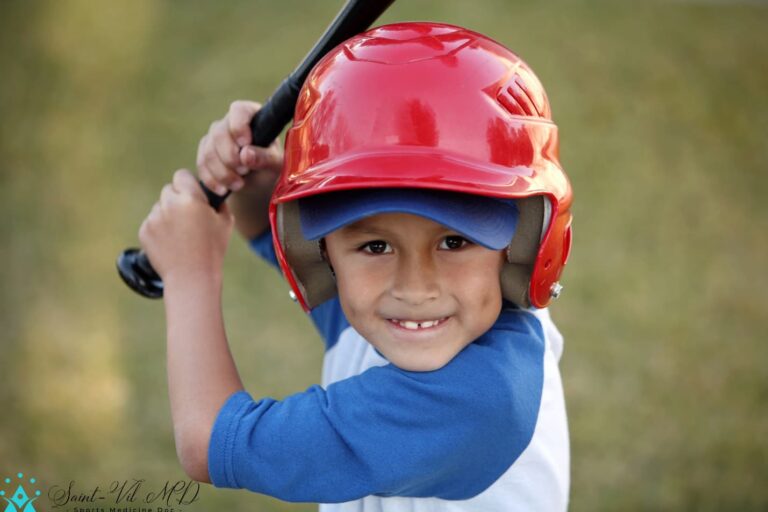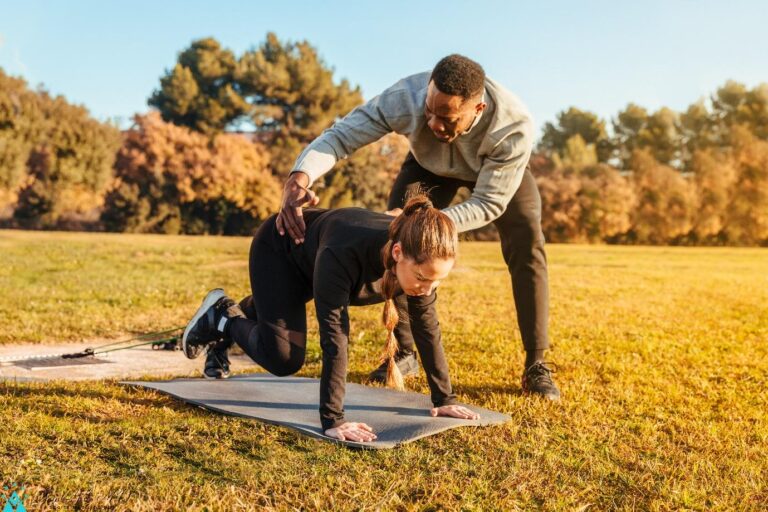
Sports Specialization: Everything you need to know
Youth sports have grown consistently over the last few decades, with more kids participating in
sports than ever before.(1) Many positives can come with starting early. One is that they can start
structuring their healthy lifestyles early in life. Since sports are often tied with schools, there can be
the benefits of keeping good grades, being in good standing with the school, and being a positive
figure in the community to participate. Studies show that participating in youth sports improves
physical fitness, self-esteem, peer socialization, and academic performance.(2)
One reason for the increase in youth sports participation is the ever-growing popularity of sports in
American culture and the growing desire to become a professional athlete. Therefore, the youth
sports culture has shifted towards higher-intensity competition and increased required hours during
the week and throughout the year.(1) This has increased the number of total injuries seen in youth
athletes today, specifically overuse injuries.(3) One study looking at athletes across 10-grade high-level athletes (participating for +1 years, 4+ days a week in season) found that injuries were the second highest cause of quitting, just behind the pressure to perform well. (4)
Sports Specialization:
Along with the increased demand for youth athletes in terms of total output, a wave of athletes are
quitting other sports to focus on just one sport, called a “sports specialization.” The thinking behind
this is that athletes need to focus on one sport at a young age to become elite athletes capable of
becoming professional players. However, this is not the case. One study published in the
Orthopedic Journal of Sports Medicine surveyed 1700+ professional athletes, 800+ college athletes,
and 700+ high school athletes and found that professional athletes, on average, sports specialized at
age 14.7 years old, college athletes 14.8 years old, and high school athletes 12.7 years old. They also
found that professional athletes were less likely to encourage their children to sports specialize at a
young age compared to college and high school athletes.(5)
Another study by Giusti et al. in 2020 compiled several studies on sports specialization to analyze
trends and pool together a larger sample size (~3500) of athletes (Meta-analysis Study). They cite
several studies that have shown no data to support that early sports specialization increases your
chances of becoming a collegiate or professional athlete. The study’s main purpose was to compare
sports specialists to sports samplers (criteria described below). They found that sports specialists had a 37% increased risk of injury compared to sports samplers.(6) Another meta-analysis study found an 81% increased risk for an overuse injury in sports specialist athletes compared to non-specialist athletes.(7)
What makes an athlete a sports specialist?
The most widely used criteria in research determining whether an athlete is a “sports specialist” is
using Neeru A. Jayanthi, MD’s “3-point Specialization Scale” developed in 2015. (8)
- Have you quit other sports to focus on 1 sport? (NO = 0 Points, Yes = 1 Point)
- Do you consider your primary sport more important than your other sports? (NO = 0
Points, Yes = 1 Point) - Do you train more than 8 months a year in your primary sport? (NO = 0 Points, Yes = 1
Point)
Grade: Sports Samplers – 0 or 1 point
Sports Specialist – 2 or 3 points
Studies that have used this scale have universally found that athletes that fall into the “sports
specialist” category have an increased risk for injury.(9), (10); More specifically, there is an increased risk for sports injury if an athlete is a sports specialist with a score of 3 compared to a sports specialist that scores a 2 (9% increased risk). (10)
There is even a difference between the type of multisport athletes. Athletes that participate in sports
that emphasize similar movements are more likely to experience overuse injuries than multisport
athletes that emphasize different movements.(3) Examples of similar movement sports would be
endurance-heavy sports (soccer, track & field, cross country) or overhead movement-heavy sports
(swimming, baseball, volleyball, tennis). Diversifying young athletes’ sports is, therefore, another
essential aspect to consider. Consult a Sports Medicine physician if you are unclear if the sports your
children play are considered diverse.
Why do youth athletes injure easier: The physiology:
It is well understood within medicine and society that youth athletes’ bodies are not fully developed.
This means that these athletes have lots of immature tissues. A common example of these tissues is
the growth plates, also called physis. During childhood, these cells rapidly multiply to create new
bone, but as we age, they mature and “close” the growth plate so that the bone can no longer
develop. Because youth athletes have those immature tissues, they are more likely to experience
injuries than adults. Several factors play into this: (1), (2), (9), (11), (12)
- Increased metabolic costs for running and tiring sooner increase the risk of injury, i.e., they burn more calories than an adult for the same workout.
- Have lower aerobic and anaerobic capacity, i.e., low maximal oxygen capacity to deliver to the body (VO2max)
- Children have more difficulty with thermoregulation during exercise and become dehydrated faster.
- During growth spurts, bone grows quicker than muscle, increasing the risk for tendon
injuries (apophysitis, avulsion fractures, etc.) - Increased risk of certain bone-cartilage injuries due to immaturity and genetic abnormalities
(Osteochondroses) - Physis (growth plate) is weaker than the surrounding bone/ligaments, therefore, has an increased likelihood of being injured/fractured than surrounding tissue. Especially
concerning because of the risk of growth defects.
What to look for and how to prevent:
It can be challenging to identify an athlete in the early stages of an overuse injury. Athletes are often
sore from competitions; this can make it hard to determine if their pain is a natural process of
athletic training or something pathologic that needs medical attention. Parents can have a higher
suspicion of an overuse injury if their child is considered a “sports specializer”, as determined above,
or if their child has had a recent dramatic increase in their athletic workload. However, all athletes
can get these injuries, so all parents should be aware of the four stages seen in overuse injuries: (1)
pain in the affected area after physical activity, (2) pain during the activity, without restricting
performance, (3) pain during the activity that restricts performance, (4) chronic, unremitting pain
even at rest. (3) If you notice your youth athletes progressing in this fashion, it would be reasonable to
advise them to seek an evaluation by a Sports Medicine provider.
As for preventing these injuries, The American Academy of Pediatrics has published several
recommendations on preventing overuse injuries and burnout in youth athletes.(3)
- Delay Sports Specialization until late puberty (~12-14 years of age).
- 1-2 days off per week.
- 2-3 months off a year from active participation/training in the sport: Injuries heal,
refresh the mind, and work on strength, conditioning, and proprioception. - Avoid participating in more than one sport in a season.
- Gradually increasing participation and workload, recommending no more than a 20%
increase in a week. - Having children participate in multiple, diverse sports with significant differences in the movements emphasized. Consult your sports medicine physician if you are unsure.
- Minimizing weekend-long tournaments with several competitive matches played in a
short amount of time. - Appropriate nutrition, adequate hydration, sports safety, and avoiding overtraining to
achieve optimal performance and good health. - If the athlete complains of nonspecific muscle or joint problems, fatigue, or poor
academic performance, be alert for possible burnout.

Written by Aidan, Bean OMS III
Ohio University Heritage College of Medicine

Reviewed by Wisler Saint-Vil, MD
Sports Medicine Physician
Marietta Memorial Sports Medicine
Department medical director
Updated on May 14, 2022
References
- Soprano, Joyce V. MD. Musculoskeletal Injuries in the Pediatric and Adolescent Athlete. Current
Sports Medicine Reports: December 2005 – Volume 4 – Issue 6 – p 329-334 doi:
10.1097/01.CSMR.0000306295.49707.1f - Magrini, Danielle DO, FAAP, CAQSM1; Dahab, Katherine S. MD, FAAP, CAQSM2.
Musculoskeletal Overuse Injuries in the Pediatric Population. Current Sports Medicine Reports:
11/12 2016 – Volume 15 – Issue 6 – p 392-399 doi: 10.1249/JSR.0000000000000303 - Joel S. Brenner, and the Council on Sports Medicine and Fitness; Overuse Injuries, Overtraining, and
Burnout in Child and Adolescent Athletes. Pediatrics June 2007; 119 (6): 1242–1245.
10.1542/peds.2007-0887 - Butcher J, Lindner KJ, Johns DP. Withdrawal from competitive youth sport: a retrospective ten-year
study. J Sport Behavior. 2002;25(2): 145-163. - Buckley PS, Bishop M, Kane P, Ciccotti MC, Selverian S, Exume D, Emper W, Freedman KB,
Hammoud S, Cohen SB, Ciccotti MG. Early Single-Sport Specialization: A Survey of 3090 High
School, Collegiate, and Professional Athletes. Orthop J Sports Med. 2017 Jul
28;5(7):2325967117703944. doi: 10.1177/2325967117703944. PMID: 28812031; PMCID:
PMC5536378. - Giusti NE, Carder SL, Vopat L, Baker J, Tarakemeh A, Vopat B, Mulcahey MK. Comparing Burnout
in Sport-Specializing Versus Sport-Sampling Adolescent Athletes: A Systematic Review and Meta-
analysis. Orthop J Sports Med. 2020 Mar 2;8(3):2325967120907579. doi:
10.1177/2325967120907579. PMID: 32166094; PMCID: PMC7052469. - Bell DR, Post EG, Biese K, Bay C, Valovich McLeod T. Sport specialization and risk of overuse
injuries: a systematic review with meta-analysis. Pediatrics. 2018;142(3):e20180657. - Jayanthi NA, LaBella CR, Fischer D, Pasulka J, Dugas LR. Sports-Specialized Intensive Training and
the Risk of Injury in Young Athletes: A Clinical Case-Control Study. The American Journal of Sports
Medicine. 2015;43(4):794-801. doi:10.1177/0363546514567298 - Zauner, C.W., Maksud, M.G. & Melichna, J. Physiological Considerations in Training Young
Athletes. Sports Medicine 8, 15–31 (1989). https://doiorg.proxy.library.ohio.edu/10.2165/00007256-
198908010-00003 - Seth L. Carder,*y BS, Nicolas E. Giusti,y BS, Lisa M. Vopat,y MD, Armin Tarakemeh,y BA, Jordan
Baker,y BA, Bryan G. Vopat,y MD, and Mary K. Mulcahey,z MD; The Concept of Sport Sampling
Versus Sport Specialization: Preventing Youth Athlete Injury: A Systematic Review and Metaanalysis; The American Journal of Sports Medicine 2020;48(11):2850–2857 DOI:
10.1177/0363546519899380 - Nailah Coleman; Sports Injuries. Pediatr Rev June 2019; 40 (6): 278–290. https://doiorg.proxy.library.ohio.edu/10.1542/pir.2018-0221
- Gillespie H. Osteochondroses and apophyseal injuries of the foot in the young athlete. Curr Sports
Med Rep. 2010;9(5):265–268
